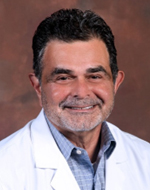Correct answer: 3. Place the patient on transmission-based precautions, including contact precautions, upon arrival until screening results have returned
Discussion:
The most appropriate response to this scenario would be to place the patient on transmission-based precautions, including either contact precautions or enhanced barrier precautions, upon arrival until screening results have been verified. Early isolation, detection, and infection control can limit the spread of C auris within facilities and among different facilities. Once the patient is admitted, either the nursing staff or the infection preventionist should recommend that the patient be placed on transmission-based contact precautions. If possible, it would also be important to try to maintain the patient in a single room.1 This aggressive infection prevention (IP) action should be taken because the transferring facility has had cases of C auris, and although the cultures from the patient’s blood, urine, and sputum sample are negative, the patient may be asymptomatically colonized, in which case, he can spread the fungus. It is important to note that this patient has numerous risk factors that increase the risk of colonization with Candida species, especially C auris. These include his healthcare encounter in a facility with confirmed C auris transmission, his receipt of high acuity medical care, and the presence of multiple indwelling medical devices.2 The IP measures are the same for both infection and colonization with C auris.
The skin, specifically the axilla groin, is the most common and consistent site of colonization, and therefore is the highest yield to swab to identify patients colonized with C auris.2 Initial screening for colonization of the patient should be performed as soon as possible (upon admission if possible) as detailed by the CDC recommendations. The swabs should be submitted to the appropriate microbiology laboratory for testing for C auris.
Answer 1 is incorrect. Initiation of micafungin, an echinocandin, would be inappropriate since the patient is medically stable and has no manifestations of sepsis or infection. In addition, overuse of antifungals can lead to an increased rate of echinocandin resistance.
Answer 2 is incorrect. It is not necessary to place the patient in respiratory isolation since C auris is not transmitted via droplets or airborne mechanisms.
Answer 4, which states no precautions are necessary, is incorrect since the healthcare workers at the LTACH are aware that the hospital transferring the patient has had cases of C auris. As stated above, it is imperative to immediately initiate contact precautions until the screening results are obtained.
Answer 5, Fluconazole, the most widely used antifungal, should not be used in this scenario for several reasons. First, prophylaxis in this asymptomatic individual is not warranted; secondly, more than 90% of C auris isolates are resistant to fluconazole;3 and finally, overuse of any antifungal has been shown to gradually lead to increased resistance to azoles and the echinocandins.








